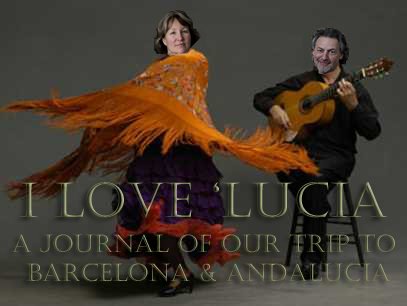

I can’t remember the last time that I had ten days to myself with no obligations. What a gift. Is this what retirement is like? Here we are in the most beautiful place imaginable in the high mountains in Spain, lazing, reading, replenishing. There truly is nothing that we have to do. Perhaps make a breakfast or go to the mercadero for supplies. Take a leisurely walk in the sleepy village. Go get a cappuccino. Write a novel, or at least a story. Oh dear, I’m feeling peckish, which restaurant shall we choose tonight? Oh look, storm clouds are starting to form over Capileira. Perhaps it’s time to start a fire. Or take a nap. There are several other villages to explore. We will definitely go down the mountain on Thursday to visit Orgiva. I understand that the open market is quite impressive. And a drive up to Trevillez would be nice; they have some of the best jambon in the world up there I am told. It is also the highest village in Europe by altitude. Let’s not forget Granada. What would a trip to Andalucia be like if we didn’t visit the Alhambra Palace. The Costa del Sol is only an hour and a half away…beautiful beaches, oceanside bodegas, seafood restaurants, and the Mediterranean blue to the coast of Africa. Every moment is precious; time drifts by.








 The area exuded a sense of calm and we felt that we had the whole place to ourselves unlike many of the more tourist-centered sites we have visited thus far.
The area exuded a sense of calm and we felt that we had the whole place to ourselves unlike many of the more tourist-centered sites we have visited thus far.


 The old city of Cordoba radiates out from the amazing Mezquita mosque in an intricate web of cobbled alleyways forming what is known as the Juderia or Jewish District. It is here that the inhabitants, (actually made up of a mix of those of Jewish, Christian, and Muslim faiths) formed a politically sound and spiritually aware society that flourished in both science and philosophy.
The old city of Cordoba radiates out from the amazing Mezquita mosque in an intricate web of cobbled alleyways forming what is known as the Juderia or Jewish District. It is here that the inhabitants, (actually made up of a mix of those of Jewish, Christian, and Muslim faiths) formed a politically sound and spiritually aware society that flourished in both science and philosophy. We visited the sinagoga, the only remaining synagogue in Andalucia and one of only three in Spain (the other two are in Toledo). It is basically a one room building with an ante room and small courtyard. It has been unused as a temple in hundreds of years.
We visited the sinagoga, the only remaining synagogue in Andalucia and one of only three in Spain (the other two are in Toledo). It is basically a one room building with an ante room and small courtyard. It has been unused as a temple in hundreds of years. 

 Sunday in Barcelona was our day to explore some of the extraordinary architectural works of Antoni Gaudi. But first…the hotel breakfast buffet!
Sunday in Barcelona was our day to explore some of the extraordinary architectural works of Antoni Gaudi. But first…the hotel breakfast buffet!
 Gaudi’s tile work is interwoven with organic design and is evident throughout the park. Local families and tourists strolled peacefully among the street vendors and musicians.
Gaudi’s tile work is interwoven with organic design and is evident throughout the park. Local families and tourists strolled peacefully among the street vendors and musicians.
 Twilight brought about the most delightful show of lights, and dancing fountains synchronized with stirring music at the
Twilight brought about the most delightful show of lights, and dancing fountains synchronized with stirring music at the  We returned to the El Born district for dinner and some experiments with hand-held night photography (3200 ISO) in the back streets of the area. We ate cod baked with brie and a vegetarian pasta made from local organic vegetables.
We returned to the El Born district for dinner and some experiments with hand-held night photography (3200 ISO) in the back streets of the area. We ate cod baked with brie and a vegetarian pasta made from local organic vegetables.

